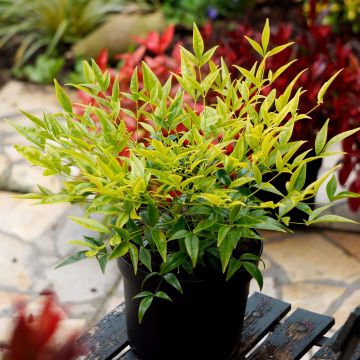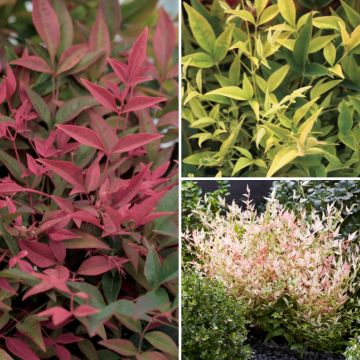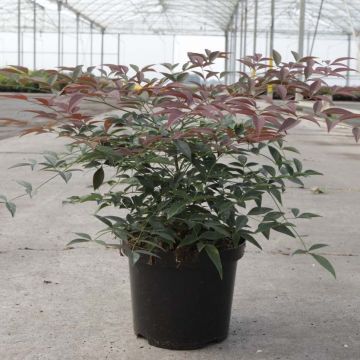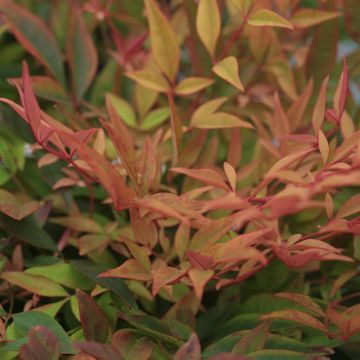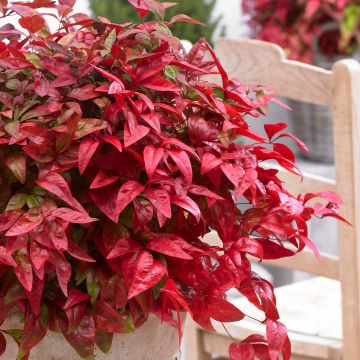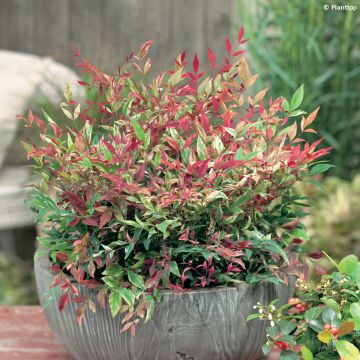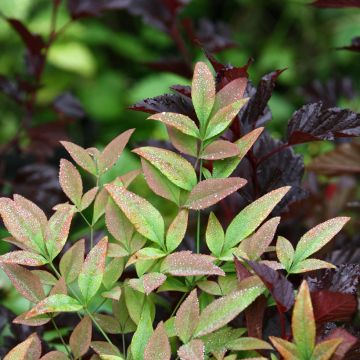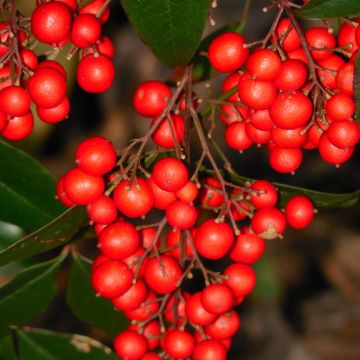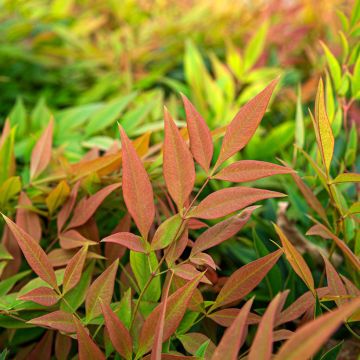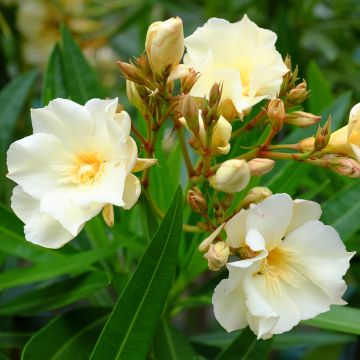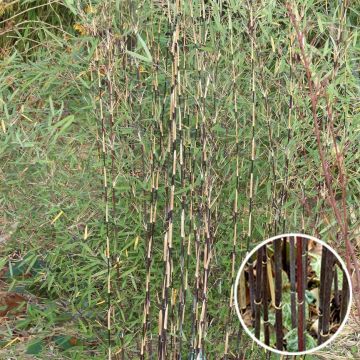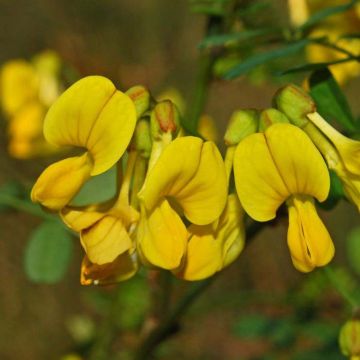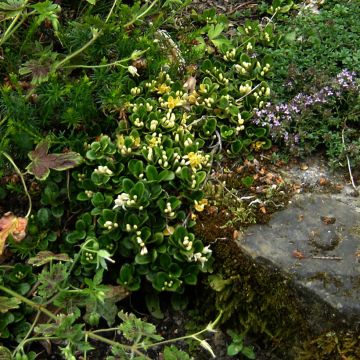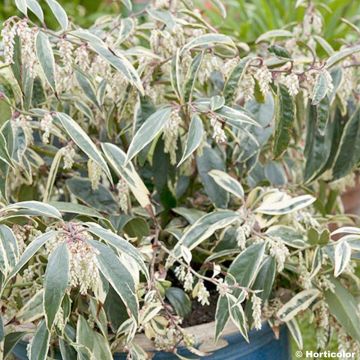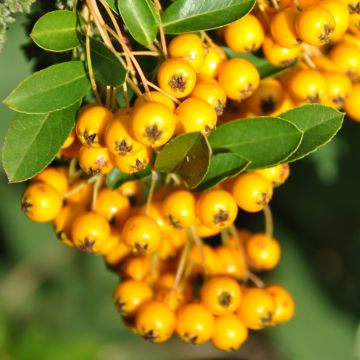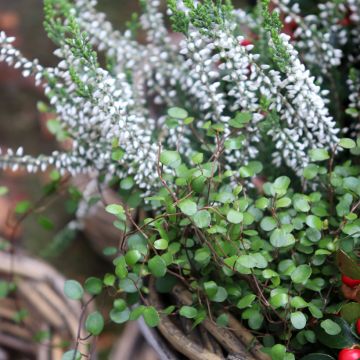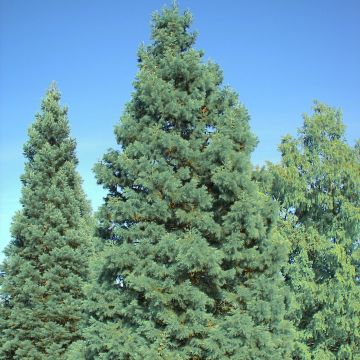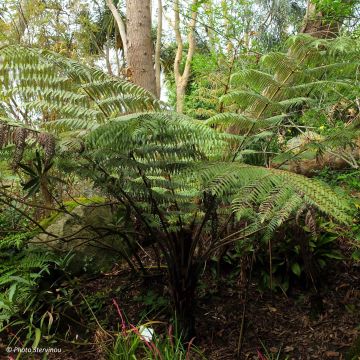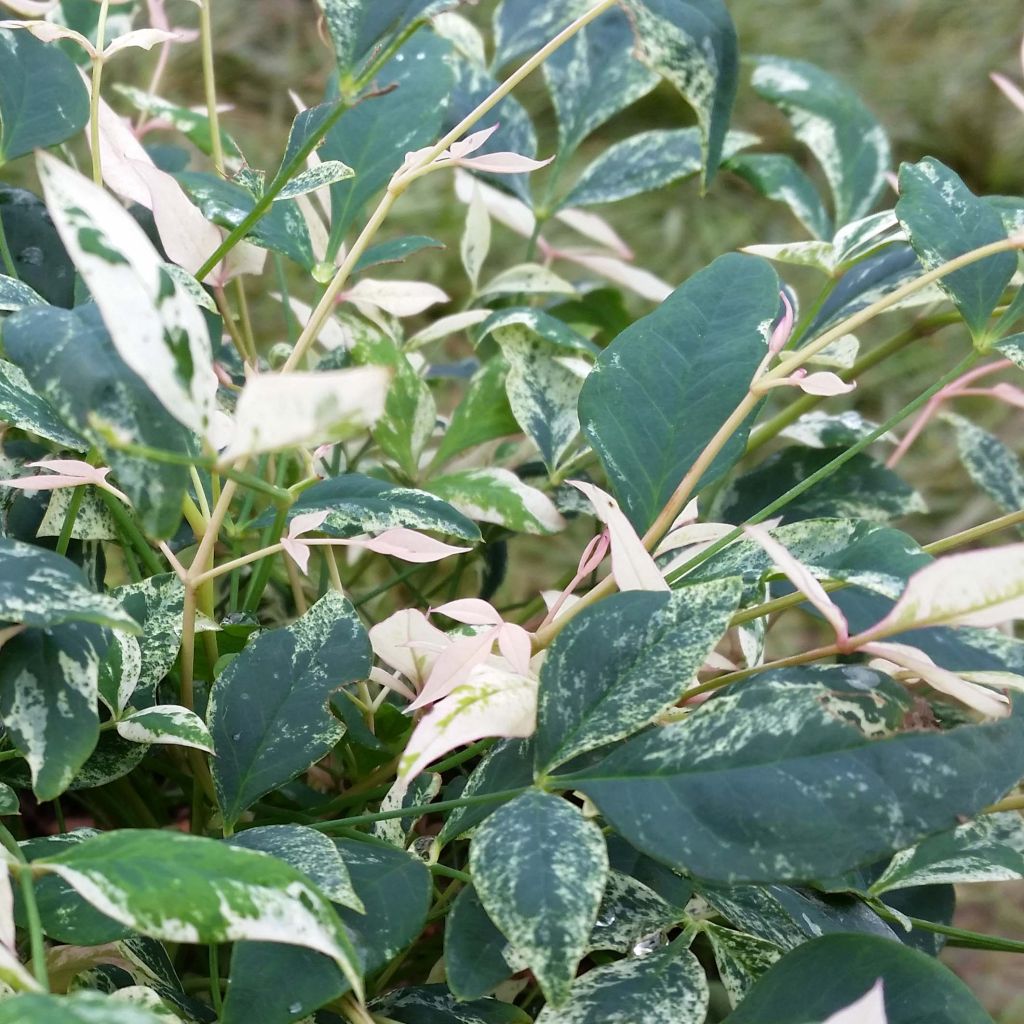

Nandina domestica Twilight - Sacred Bamboo
Nandina domestica Twilight - Sacred Bamboo
Nandina domestica Twilight
Sacred Bamboo, Heavenly Bamboo
This item cannot be shipped to the selected country
Delivery charge from €5.90
Delivery charge from €5.90
Delivery charge from €5.90
Delivery to Corse prohibited
More information
Schedule delivery date,
and select date in basket
This plant carries a 24 months recovery warranty
More information
We guarantee the quality of our plants for a full growing cycle, and will replace at our expense any plant that fails to recover under normal climatic and planting conditions.
From €5.90 for pickup delivery and €6.90 for home delivery
Express home delivery from €8.90.
From €5.90 for pickup delivery and €6.90 for home delivery
Express home delivery from €8.90.
From €5.90 for pickup delivery and €6.90 for home delivery
Express home delivery from €8.90.
Delivery to Corse prohibited: UE law prohibits the import of this plant from mainland France to Corse as part of the fight against Xylella fastidiosa. Please accept our sincere apologies.
More information

Does this plant fit my garden?
Set up your Plantfit profile →
Description
Nandina domestica 'Twilight' is a small evergreen bush with a truly elegant appearance, slowly forming a compact clump of slender upright stems. Unique and attractive, it is remarkably decorative in all seasons, with its splendid ornamental and bright leaf foliage, and shades that vary with the seasons. Its young shoots are coppery pink in spring, then its leaves become variegated with creamy white, taking on more intense colours in winter. Its summer flowering in panicles of white flowers gives way to clusters of small scarlet berries. This recent variety won a gold medal in 2015 at the famous international Plantarium exhibition in Boskoop, Netherlands.
Nandina domestica, commonly called Sacred Bamboo or Heavenly Bamboo, is native to India, China, and Japan, and belongs to the Berberidaceae family. Nandina domestica 'Twilight' is a brand new variety from the United States, forming a small evergreen bush with slender upright stems and a rounded and compact habit. It grows rather slowly and at maturity reaches a maximum height of 1 m to 1.20 m (3.3 ft to 3.9 ft), with a width of about 50 cm (19.7 in). The main advantage of this cultivar lies in its dense vegetation, with spreading pinnate leaves that change colours throughout the seasons. This Sacred Bamboo displays bright pink young shoots in spring, becoming light green with a touch of cream when mature, with these colours becoming even more intense in winter. In July, it produces large paniculate clusters of small white star-shaped flowers, followed in September by clusters of red berries that are decorative throughout the winter and sometimes persist during the next flowering season.
Nandina domestica 'Twilight' is a bush that will give a touch of Japanese style to the garden. Planted in front of borders or in a shady rock garden, its bright pink foliage, then variegated green with cream, its summer flowering, and its attractive red berries will be beautifully highlighted. Being small in size, it is perfectly suited for small gardens, but also for growing in large pots on a terrace or balcony. It can also be planted as a low hedge to create a splendid, ever-changing, bright green screen. It is possible to use a single species, but a mixed hedge can be created by mixing several varieties of Nandina or by combining different species of small flowering bushes. It can be planted with Peonies, Camellias, Rhododendrons, Hydrangeas, Mountain Laurels, and Andromedas. In a mixed hedge, it can be paired with a Deutzia, a Japanese Spiraea, a Pheasant's Tail Tree, a Viburnum, or a Butterfly Bush.
The term Nandina is derived from the Japanese word Nantensei, which refers to this bush in Japan. The specific term domestica comes from the Latin word Domus, meaning house or dwelling. Indeed, Nandina domestica has been highly appreciated in the Far East for centuries and is considered a sacred plant. In Japan, it is cultivated near houses and temples and is used in Ikebana as a symbol of purification. In China, where it is called Tein-shok or Sacred Bamboo, it has always been used to adorn temple altars.
Despite its bamboo-like appearance and its nicknames (Sacred Bamboo, Heavenly Bamboo, or Bamboo of Happiness), Nandina domestica has no botanical relation to Bamboo, which belongs to the Gramineae family.
Report an error about the product description
Nandina domestica Twilight - Sacred Bamboo in pictures
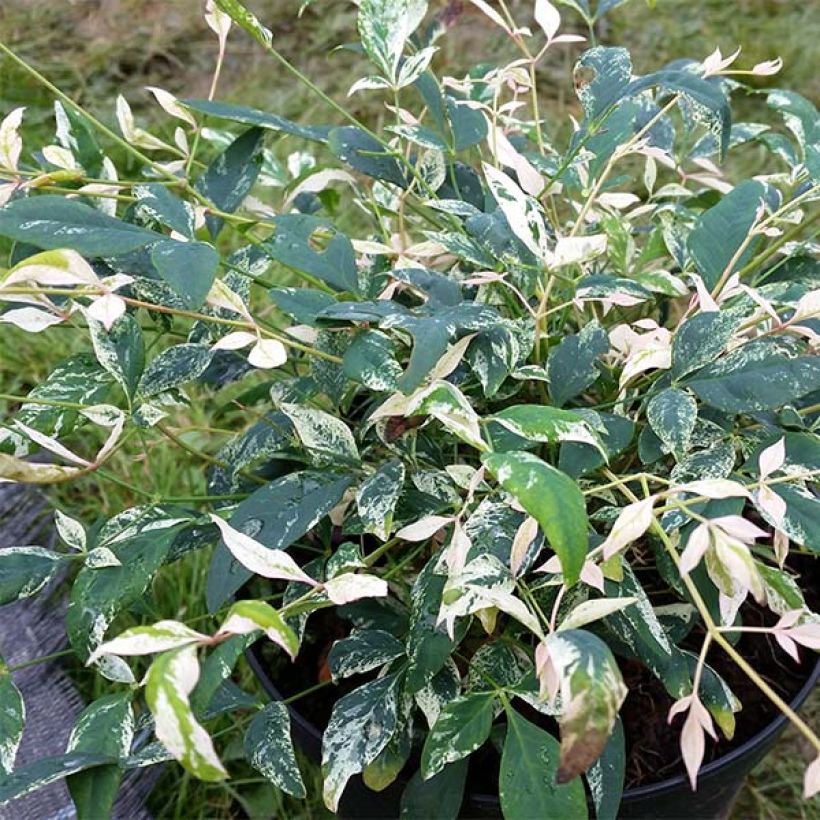

Plant habit
Flowering
Foliage
Botanical data
Nandina
domestica
Twilight
Berbéridacées
Sacred Bamboo, Heavenly Bamboo
Cultivar or hybrid
Other Nandina
Planting and care
Nandina domestica 'Twilight' is easy to grow and maintain. It can be planted in spring or autumn. It prefers a sunny location, without being too hot, or partial shade. Choose a rather rich, deep, and well-drained soil. It prefers slightly acidic to neutral soil, without too much limestone. It is best to choose a location sheltered from cold and drying winds. It is hardy to -15° C (5° F), even though it seems to tolerate occasional temperatures down to -18° C (-0.4° F). In regions with harsh winters, it is recommended to protect its base with a thick layer of dead leaves in late autumn. In case of intense cold, the above-ground parts of Nandina can be damaged. If this happens, cut back the damaged parts in February-March, even down to ground level. Nandina will then produce new shoots from the stump. Propagation can be done in late summer, by taking a cutting from the previous year's wood. Very resistant to diseases, Nandina can, however, very rarely be affected by a virus causing poor development of the leaflets. They then become narrow and wrinkled.
Planting period
Intended location
Care
-
, onOrder confirmed
Reply from on Promesse de fleurs
Evergreen shrubs
Haven't found what you were looking for?
Hardiness is the lowest winter temperature a plant can endure without suffering serious damage or even dying. However, hardiness is affected by location (a sheltered area, such as a patio), protection (winter cover) and soil type (hardiness is improved by well-drained soil).

Photo Sharing Terms & Conditions
In order to encourage gardeners to interact and share their experiences, Promesse de fleurs offers various media enabling content to be uploaded onto its Site - in particular via the ‘Photo sharing’ module.
The User agrees to refrain from:
- Posting any content that is illegal, prejudicial, insulting, racist, inciteful to hatred, revisionist, contrary to public decency, that infringes on privacy or on the privacy rights of third parties, in particular the publicity rights of persons and goods, intellectual property rights, or the right to privacy.
- Submitting content on behalf of a third party;
- Impersonate the identity of a third party and/or publish any personal information about a third party;
In general, the User undertakes to refrain from any unethical behaviour.
All Content (in particular text, comments, files, images, photos, videos, creative works, etc.), which may be subject to property or intellectual property rights, image or other private rights, shall remain the property of the User, subject to the limited rights granted by the terms of the licence granted by Promesse de fleurs as stated below. Users are at liberty to publish or not to publish such Content on the Site, notably via the ‘Photo Sharing’ facility, and accept that this Content shall be made public and freely accessible, notably on the Internet.
Users further acknowledge, undertake to have ,and guarantee that they hold all necessary rights and permissions to publish such material on the Site, in particular with regard to the legislation in force pertaining to any privacy, property, intellectual property, image, or contractual rights, or rights of any other nature. By publishing such Content on the Site, Users acknowledge accepting full liability as publishers of the Content within the meaning of the law, and grant Promesse de fleurs, free of charge, an inclusive, worldwide licence for the said Content for the entire duration of its publication, including all reproduction, representation, up/downloading, displaying, performing, transmission, and storage rights.
Users also grant permission for their name to be linked to the Content and accept that this link may not always be made available.
By engaging in posting material, Users consent to their Content becoming automatically accessible on the Internet, in particular on other sites and/or blogs and/or web pages of the Promesse de fleurs site, including in particular social pages and the Promesse de fleurs catalogue.
Users may secure the removal of entrusted content free of charge by issuing a simple request via our contact form.
The flowering period indicated on our website applies to countries and regions located in USDA zone 8 (France, the United Kingdom, Ireland, the Netherlands, etc.)
It will vary according to where you live:
- In zones 9 to 10 (Italy, Spain, Greece, etc.), flowering will occur about 2 to 4 weeks earlier.
- In zones 6 to 7 (Germany, Poland, Slovenia, and lower mountainous regions), flowering will be delayed by 2 to 3 weeks.
- In zone 5 (Central Europe, Scandinavia), blooming will be delayed by 3 to 5 weeks.
In temperate climates, pruning of spring-flowering shrubs (forsythia, spireas, etc.) should be done just after flowering.
Pruning of summer-flowering shrubs (Indian Lilac, Perovskia, etc.) can be done in winter or spring.
In cold regions as well as with frost-sensitive plants, avoid pruning too early when severe frosts may still occur.
The planting period indicated on our website applies to countries and regions located in USDA zone 8 (France, United Kingdom, Ireland, Netherlands).
It will vary according to where you live:
- In Mediterranean zones (Marseille, Madrid, Milan, etc.), autumn and winter are the best planting periods.
- In continental zones (Strasbourg, Munich, Vienna, etc.), delay planting by 2 to 3 weeks in spring and bring it forward by 2 to 4 weeks in autumn.
- In mountainous regions (the Alps, Pyrenees, Carpathians, etc.), it is best to plant in late spring (May-June) or late summer (August-September).
The harvesting period indicated on our website applies to countries and regions in USDA zone 8 (France, England, Ireland, the Netherlands).
In colder areas (Scandinavia, Poland, Austria...) fruit and vegetable harvests are likely to be delayed by 3-4 weeks.
In warmer areas (Italy, Spain, Greece, etc.), harvesting will probably take place earlier, depending on weather conditions.
The sowing periods indicated on our website apply to countries and regions within USDA Zone 8 (France, UK, Ireland, Netherlands).
In colder areas (Scandinavia, Poland, Austria...), delay any outdoor sowing by 3-4 weeks, or sow under glass.
In warmer climes (Italy, Spain, Greece, etc.), bring outdoor sowing forward by a few weeks.

































